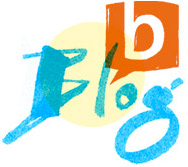- Author: Martin Haussmann
- Categories: Tips, Tricks & Methods
- Date: 28.10.2019.
When, during discussions with colleagues or clients, you once again get that feeling that there is a lack of mutual understanding, what you’re really missing are just three things: a pen, a sheet of paper, and a couple of drawing basics. With these, visualization opens a second channel of communication, and immediately, people begin to better understand each other’s point of view.

Back in 1971, Allan Paivio, a native Canadian, introduced his Dual Coding Theory at the University of Western Ontario. His theory was based upon the assumption that, since we mentally process images differently than we do verbal or written information, we learn more easily when we can also imagine information in terms of images. If we’re learning a foreign language, for instance, and trying to memorize a word like “Hund,” the German word for “dog,” if we at the same time imagine a scruffy dog, our brain then will create two different “representations,” as Paivio has termed them, for a single piece of information. When we later try to recall this learned piece of information back into memory, we can activate both of the information channels, and this allows us to recall the information more quickly.
We employ this theory at the bikablo akademie as well, when, in our discussions with others, we translate ideas, aspects, and details into small sketchnotes, consisting of text and images. We refer to these as “thought sketches” or “sketchnoting in dialogue.” When we do this, the following happens:

As people converse, each person formulates his or her own thoughts. I hear what the other person says – but am I really interpreting it correctly? Have I really understood?

If, at the same time, I sketch what I have heard on a sheet of paper, I make visible to the other person my understanding of what was said – and provide insight into my own thinking. In doing this, I actively open the “second channel of communication” that Paivio discusses.

The person I’m speaking with can now respond to this input. What did he or she like about my interpretation – and what not? What would they have done differently?

The other person can also simply pick up a pen and begin to sketch their own ideas and perceptions of the situation. This generates “thought maps” that, in the ensuing discussion, can lead to a well-thought-out solution. This allows us to arrive at a mutual understanding and to maintain more in-depth and inspired exchange.

